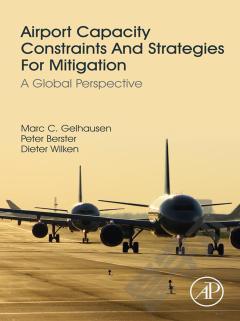Airport Capacity Constraints and Strategies for Mitigation —— A Global Perspective
----- 机场,今天和未来的容量,容量限制和容量储备
When predicting the future of air traffic development, it is imperative for researchers and planners to have the most accurate information about airport capacity constraints. Airport capacity constraints and strategies for mitigation: A global perspective analyses airport capacity constraints with empirical methods that forecast future capacities and capacity shortfalls. The book discusses in detail the importance of airport capacity constraints on air traffic development, especially for international hubs, along with mitigation strategies for already congested airports. It analyses empirical data to provide greater insight into the problems of airport congestion and capacity shortage. The authors present detailed global traffic forecasts for the years 2030 and 2040, and mitigation strategies for overcoming the problem of limited airport capacity. As expanding current airports becomes increasingly difficult, and time consuming 鈥?especially for hubs 鈥?the study of current and future airport capacity constraints becomes ever more needed. This book provides detailed information about how to correctly assess and quantify the problem of limited airport capacity, while offering strategies for overcoming these issues for a healthy global air traffic network.Focuses on airport capacity constraints in the global air traffic network and their implications for the future of air traffic developmentFeatures empirical and model-based approaches that forecast airport capacities and capacity shortcomingsProvides over capacity mitigation strategies based on sound and reliable data and methodologyAddresses capacity constraints at hub airports, providing insight into how to correctly assess and quantify limited capacity for these important players in the global air transportation networkApplies econometric models for the implication of restraining factors on the future volume and structure of air traffic
{{comment.content}}








 京公网安备 11010802027623号
京公网安备 11010802027623号